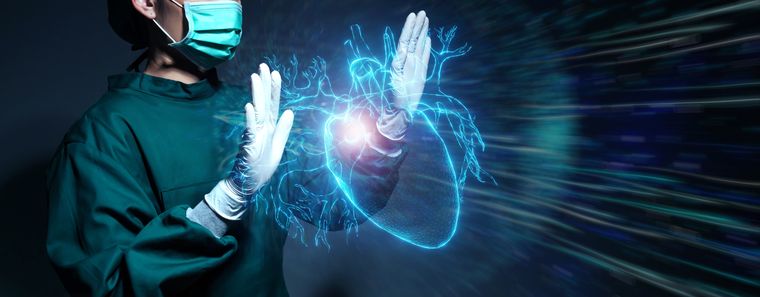Guest Column/ Suneeta Reddy, managing director, Apollo Hospitals
When OpenAI unveiled ChatGPT―an advanced, interactive, generative artificial intelligence platform―it captured everyone’s imagination. Here was something that could clear the bar exam, the medical exam, write poetry, songs and de-bug computer programmes. The excitement around ChatGPT is because of its easy conversational style and its versatility.
Now that the potential of AI has been understood by a broad spectrum of our people, imagine its impact on a sector like health care. Imagine if the power of AI could be used to accelerate and support diagnoses by clinicians, based on big data models that mined millions of prior cases as well as evolving research. Imagine if this capability could be deployed in the most under-served regions in India and the world, ensuring that everyone had equitable access to the highest quality of care. If nurses and doctors would be free to do what only they could do―provide the human, healing touch―everything else would be done seamlessly by AI. Imagine if AI could be used to predict disease much before it manifested. Most importantly, if it could predict propensity for disease at a population health level, bringing genomics, biomechanics and social determinants of health together, and provide a pathway to a healthy, disease-free world.
This may sound audacious, but all meaningful change begins with impossible ideas. And the truth is that a lot of the building blocks of these dreams are already in place. Let me share a few examples of what we have done at Apollo Hospitals.
In partnership with Microsoft, we built the predictive cardiac risk score―AICVD―the first-of-its-kind based fully on Indian population data. For an individual, this score is an indication of future risk of cardiac disease, and offers an opportunity to reverse the risk through clinician-monitored measures. Today, more than one million Apollo ProHealth preventive health checks are backed by this algorithm. In addition, the ProHealth DeepX is a key offering in the metaverse lineup, serving as a crucial link between real-world clinical health data and virtual reality, offering an immersive experience that empowers individuals to vividly observe their heart’s health and wellbeing. We have used longitudinal patient journeys to develop risk scores for other conditions such as diabetes, chronic obstructive pulmonary disease, chronic kidney disease and liver fibrosis.
We launched the Clinical Intelligence Engine (CIE), a groundbreaking system designed to emulate a doctor’s decision-making capabilities, earlier this year. Developed from a database of more than two million records and more than a billion data points, the engine uses natural language processing and deep learning to act as a clinical decision support system for doctors. Today, it covers 1,300 conditions and 800 symptoms, and is being used by more than 1,500 clinicians. Initial results show that it improved speed of diagnosis and reduced clinician time by 10 per cent. In a country where clinical talent is in short supply and several regions are significantly under-served, this solution could be the bridge to provide access to high-quality clinical decision support.
There is a whole body of work ongoing in applying AI in diagnostic imaging, leading to two direct benefits. One is managing the workload of clinical teams, and allowing them to work at a very high quality across geographies. And the other is minimising or nearly eliminating the risk of oversight or human error while protecting clinician judgment. The applications of this are vast―from radiology, pathology to haematology and cardiac imaging.
There is also a significant body of work on AI-augmented clinical pathways. Our antibiotic stewardship programme, sepsis protocols and early warning systems use AI. It must be said that all of this work is being done with very strong governance and strong adherence to patient consent, confidentiality and privacy policies.
The possibilities offered by AI in health care are endless. Maybe the day is not far when AI will read the CT scan, detect the tumour, 3D print the organ and surgery will be performed by an image-guided robot, with minimal human intervention.
Also Read
- How artificial intelligence is redefining health care in India
- THE WEEK-Hansa Research Survey: India's Best Hospitals 2023
- 'Patients should come to AIIMS only for complex diseases': Director M. Srinivas
- AI has immense potential to bring high-quality health care
- Medical education in India needs comprehensive reform
- A doctor's learnings from his internship
The only constraints of how we can make this happen are the limitations of our own thinking, and the resources that we can deploy. We can optimise for both of these by building strong multi-disciplinary and multi-geography partnerships, and by various stakeholders coming together, including governments. The National Health Stack, currently under construction in India, will bring a paradigm shift in the way health data is managed in the country, and with strong guardrails, can become the most powerful health intelligence system in the world.
The future of health care will not be about illness; it will be about prevention, wellness and prediction. It will not be about survival; it will be about individuals living life to their fullest potential. It will not be about financing the nation’s disease burden; it will be about funding programmes that lead to better population health outcomes, and creating equity in health care.
It will not be about nurses spending enormous amounts of time filling paperwork, or about doctors stretched for time to see all the patients queuing up for them; it will be about quality time, compassion and empathy―all the things that AI cannot do, yet.



